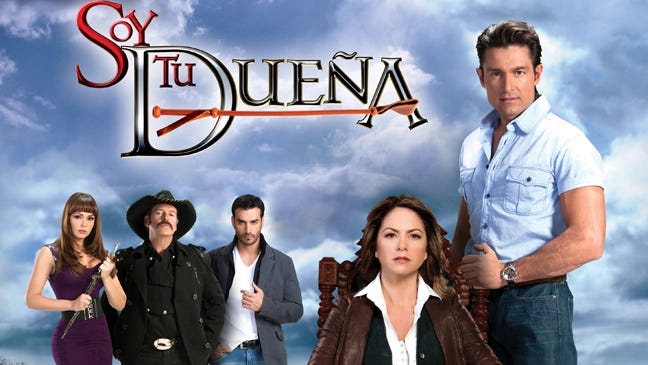MakerDAO was one of Otonomos’ first clients when back in 2014 Rune came to see us and explained MakerDAO’s use case for its overcollateralized stablecoin DAI.
Two years later MakerDAO launched and today, it is still one of the leading decentralized stablecoin issuers, even though its initial dominance has since been eroded.
DAOs: Dystopian Autocratic Oligarchies?
In addition to an economic experiment, from the outset Maker has also been a governance experiment.
However many would argue that whilst it succeeded at the former, it failed at the latter, with some on the inside calling it a Dystopian Autocratic Oligarchy (after they were “offboarded”) following a recent onchain vote rejecting the adoption of a new lending oversight core unit.
Many MKR hodlers who supported the vote felt their hand was forced and that TradFin tactics similar to a hostile takeover were deployed to gather support for the Nay vote.
They see in the recent events an attempt to concentrate power in the hands of a very few, including Rune as one of MakerDAO’s founders.
Others see in the rejected vote a victory of the original leads over Maker’s venture capital investors, including Andreessen Horowitz, Paradigm and BlockTower, representing institutional interests.
Walking a tightrope
This post is not meant to retell the diverging accounts of what happened. It is clear that in the run-up to the vote, positions were already hardening on real-world assets and funding models incl. possibly equity tokens.
In addition, Maker has had its share of governance drama before, including when in 2019, "Zandy", the online handle of Andy Milenius, then chief technology officer of MakerDAO, spilled the beans in a 24-page tell all of Maker’s internal feuds.
Rather we want to use the case of MakerDAO to illustrate how difficult decentralized governance actually is.
To get a sense of the balancing act, we take a closer look at Rune’s “Endgame” governance proposal, Parts 1 and 2 of which were originally posted on May 30th, shortly after the fateful proposal to add a Lending Oversight Core Unit (aka LOVE Core Unit) was posted. We then look at some of the ripostes, including a “public clarification” by one of MKR’s main institutional token holders.
The Endgame almost reads like an exhortation, written in what feels like a mood of desperation.
In very simplified terms, it recognizes that Maker’s core as it stands (essentially its 6 most popular vaults) could easily be put on autopilot with occasional maintenance by a handful of people.
The hard nut to crack is how to grow and govern the platform beyond its core so Maker can “again lead the industry”.
Rune’s key solution is to create “MetaDAOs” (though they conceptually are sub-DAOs or at least supported by Maker Core), each with their own token that can be used to incentivize their respective communities, and each working on a use case for DAI, most prominently what real-world assets could be used for collateralization.
Perhaps for this reason, Rune’s proposal has been called a “break up” of Maker, though we read them as a genuine attempt to save its governance by seeking to reconcile the seemingly irreconcilable: reaching massive scale without (re)centralizing governance.
For instance, the MetaDAO approach is accompanied by a number of other measures, such as Voter Committees where in advance of a vote, rough consensus would be reached within a subgroup of MKR token holders, with the idea of coordinating voting behavior.
Equilibrium at the edge of chaos
All in all, the balancing act in the Endgame proposal seeks to put mechanisms in place that its author believes will nudge Maker’s governance towards the sort of long-term, lasting decentralized equilibrium - located at the edge of chaos - required to sustain DAI as the world’s stablecoin of choice.
At its heart is a believe that economic scale and decentralized governance can be reconciled.
Others however see hard trade-offs between scale and decentralization: they believe decentralized projects are destined to remain small, for one because they cannot harden themselves against regulatory risk.
Institutional investors, see such hardening as a necessary evolutionary stage for Maker to scale - and protect their investment in the project.
Against this background, in mid-October Porter Smith, MakerDAO’s lead partner at A16Z, which holds a significant stack of MKR, publicly clarified A16Z’s thinking surrounding “the overall strategic direction for MakerDAO and the Endgame Plan’s role in it”.
In it, Rune’s proposals are called “complex” and an “alternative mental framework” is put forward to try to “increase MakerDAO’s decentralization while best optimizing long-term growth”.
The note clearly prefers reforming the existing system based on legally already largely decentralized Core Units over the “organizational risk” inherent in the Endgame’s radical redesign of MakerDAO’s full time contributor base.
How do you like your decentralization served, sir?
The A16Z response also identifies the key issue surrounding technical decentralization of Maker, which essentially is a question of how decentralized does one want the backing of DAI to be.
Basically, if you decentralize to the extent that anyone can just add collateral of any quality to mint DAI, how do you maintain DAI’s peg?
It was this question of collateral quality, and the perceived need to have some sort of lending oversight, that lead to the LOVE vote. Adding Real World Assets does open a can of worms for Maker, but without RWAs the question is how much can DAI really become the decentralized backbone of global trade and payments?
Finally, the A16Z investor note talks about the economic conundrum of using potentially censorable collateral which, if blacklisted, would make the system insolvent and ultimately threaten Maker’s very existence.
Overall, perhaps predictably, A16Z’s comments favor atomic experimentation over wholesale changes and makes it clear that it won’t support any improvement proposals that upset the apple cart: any vote on whether the Endgame should be implemented is seen as premature and reckless.
Who gets paid what?
From the above, as in an actual telenovela! - it is clear that the underlying dynamics within the MKR holder family are much more subtle than an open war between institutional interests (“VC greed”) vs. the Brave Defenders of Decentralization.
Nonetheless, the water between interests from VC together with other institutional token holders on the one hand and the project’s founders and broader Maker community beyond its Core Units on the other hand may ultimately prove too deep.
VCs are ultimately accountable to their LPs and are therefore under pressure to maximize returns. As token holders without equity upside, this means optimizing for token price appreciation. There is no “exit” beyond a token sale.
For the crypto native community, token price is important but many more factors, ideological ones not in the least, weigh in. An appreciating token yes, but not at the cost of bringing DeFi under TradFi e.g. by installing quasi manager-lead lending oversight committees.
Maker’s drama is therefore of all times: can DeFi and Web3 generally get to the scale required to replace TradFin without hierarchies and without becoming manager-run companies?
From vibrancy to vitriol
Much of the serialization of Maker’s drama comes precisely from the internal attempts at trying to find the right DAO governance model to grow beyond its current 6BN (and change) in Total Value Locked.
Many of us who build on blockchain wish we could see the level of debate and participation Maker enjoys. But vibrancy and vitriol often are only a comment away on forum.makerdao.com, and whilst mudslinging is occasionally fun to watch, it would be tragic if a project with the promise of Maker ends up unable to resolve its internal tensions.
What can other projects learn from this?
- For one, chose your friends. If you let VC in, know what you’re in for. Most are fair weather friends. Few stick with you through thick and thin. But all have their pressures to show a return to their constituency, and that constituency is not your community but the investors they in turn are beholden to. As Warren Buffett once said, understand how people are paid and you’ll understand how the world ticks.
- If at all possible, raise from your community.Regs stand in your way by making it more difficult to raise from the crowd at large, but don’t hold your breath for a reg change. It ain’t happening soon so maybe we need to learn to live with the restrictions, do what we need to do to make our token offerings compliant and do with less initial funding but find ways to go out there and raise repetitively.
- Iterate and innovate on governance. There is no precedent for projects at scale without a leader.
- Put adults in the the room. The level of dilettantism in the crypto space is tragic. If we’re going to tear down the walls of TradFin, we’ll need to use some if its stones to build our new cathedral. Let’s not be conceited and discard everything that’s been developed before we came. In the case of stable coins, credit quality does matter and TradFin processes have been developed that screen for it. In the case of governance, managerial competence and decentralization can co-exist. And in the case of how to raise capital, yes current investor protection regs are absurd. Yes it is pervers that crypto largely exists by the grace of the very intermediaries of centralized capital it seeks to replace. But only if we reach scale will we be able to tap the broader market for funding and reach mainstream adoption. So get to scale or die trying!
Follow the governance experiment at OtoCo, Otonomos’ decentralized spin-off, via its official Telegram channel.


